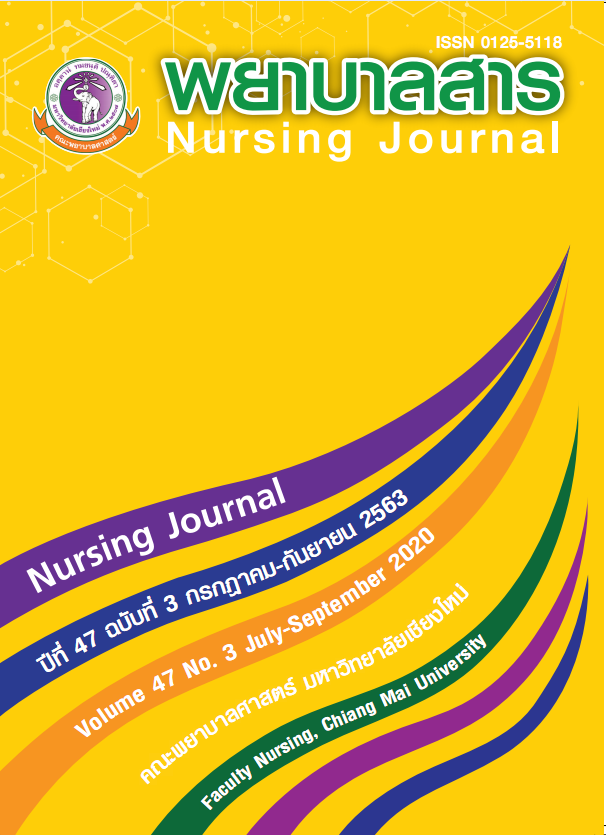Effects of Paslop dancing exercise program on blood pressure and body mass index for people living with hypertension
Keywords:
Pasalop dancinge exercise program, Blood pressure, Body mass index, people living with hypertensionAbstract
Hypertension is a major problem which is one of the leading causes of premature death. Which, if having high blood pressure for a long time, continuous and consistent exercise can help lower blood pressure complications dance exercise continuous and consistent. This research was a quasi-experimental research. To study the effects or the effectiveness of the paslop dancinge exercise program on blood pressure and body mass index in hypertensive patients. The subjects were people living with hypertension patients with body mass index aged 30-60 years, systolic blood pressure between 140-159 mmHg and/or diastolic blood pressure between 90-99 mmHg. There was a body mass index between 23- 40 kg/m2 The sample consisted of 70 persons, divided into 35 persons in an experimental group and 35 persons in a control group. The experimental group performed the paslop dancing exercise for 50 minutes each time, 3 times a week for 12 weeks, while the control group was provided with routine nursing care. The instrument of this study included 1) The blood pressure record and the body mass index record forms and, the Blood pressure monitoring, the Weighing scale and Height measurement. and 2) paslop dance exercise program. They were validated for content validity by 5 experts. Data were analyzed using descriptive statistic, Independent t-test, and Repeated measures one way ANOVA. After the trial ends the experimental group consisted of 27 participants while 34 participants were at the control groups.
The results revealed that: 1) Systolic and diastolic blood pressure of participants in the experimental group before received the paslop dancinge exercise program and after the receiving the pastor dancing excise program at 4 weeks, 8 weeks, and after the intervention were significant difference (p<.05).
2) Body mass index of participants in the experimental group before received the paslop dancinge exercise program and after the receiving the pastor dancing excise program at 4 weeks, 8 weeks, and after the intervention were significant difference (p<.05). .
3) After received the paslop dancinge exercise program, the experimental group had significantly lower level of blood systolic and diastolic pressure than the control group (p<.05).
4) After intervention the paslop dancing exercise program, the experimental group had significantly lower body mass index score than the control group (p<.05).
The results of indicate that the paslop dancinge exercise program should be provided to reduce blood pressure level and body mass index in people living with hypertension.
References
Achananuphap, S. (2010). Textbook for treatment of 350 common diseases and care and prevention. Bangkok: Office of Villagers.
Division of communicable diseases. (2018). Campaign Message on the World Blood Pressure Day Year 2018. Retrieved from www.thaincd.com /document/file /info/non -communicabledisease/ประเด็นสารวันความดันโลหิตสูง_61.pdf. (In Thai)
Dongnok, S. (2015). Knowledge about obesity (1st ed.). Khon Kaen: Medical Health Promotion Unit, Srinagarind Hospital.
Ekkaphon, W. (2016). Report of the 5th Thai Health Survey by Physical Exam 2014. Bangkok: Division of Nursing, Department of Health. (In Thai)
Haradan, P. (2003). Industrial psychology. Bangkok: Suwiraya San.
Kanthachon, W. (2014). Comparison of Paslop Dance Exercise and Specific Abdominal Muscle Exercise on Balance and Strength of Core Muscles in Volunteers at Do not exercise regularly.Journal of Medical Technology, Chiang Mai, 47(3), 143-152. (In Thai)
Kitkuson, D. (2011). Exercise manual. Bangkok: Publisher of Villagers Doctor.
Khanthabut, N. (2012). Exercise for health. Retrieved from http://www. libarts. mju.ac. th/LibDocument/EBook/013.
Khuha, A. (2003). Motivation and emotion. Pattani: Pattani through the Technology Bureau of Science Service.
Leelayuwat, N. (2010). Physiology of exercise. Khon Kaen: Khon Kaen University Press.
Mae Wong Hospital and Ban Taling Sung Subdistrict Hospital, Medical Record and StatisticsReport (2017). Budget year 2017. n.p.
Namsri, P. (2009). Guide to general health care for workers. Bangkok: Pailin Publishing. (In Thai)
Nawitcharoen, R. (2010). High blood pressure (2nd ed.). Bangkok: Amarin Health.
Niamsawan, A., Oba, N., & Tansupaswastikul, S. (2012). Effects of aerobic exercise using Pong Langmusic on physical fitness and blood pressure levels in the elderly with hypertension. Journalof Nursing and Health, 6(2), 62-75. (In Thai)
Phanmung, N., Yoolertlob, A., & Sichit, S. (2019). Issues on Campaign for World Blood Pressure Day 2019. Retrieved from https://pr.moph.go.th/?url= pr/detail /2/07/ 127178/.
Phansaard, W. (2012). Aerobic dance. Bangkok: Assembly Printing House, Agricultural Cooperative of Thailand Limited.
Phonthawee, K. (2015). The effectiveness of weight loss program of public health volunteers. Luek Noi Subdistrict Luek District, Krabi. Province Journal of Khon Kaen University Community Health Development, 3(3), 427-440. (In Thai)
Simongthong, S., Tilaphat, J., Srikomut, Ch., Suphaphan, Ch., & Thawat, S. (2015). A study of the attitudes of daily life of people with the ability to look after themselves (Paslop) Exercise-Ex-ercise for health. Bangkok: Academic.
Sukonthasan, A. (2015). Guidelines for the treatment of hypertension in general practice. Retrieved from http: //www.thaihypertension.org/files/GL20HT202015.pdf.
Downloads
Published
How to Cite
Issue
Section
License
บทความที่ได้รับการตีพิมพ์เป็นลิขสิทธิ์ของวารสารพยาบาลสาร
ข้อความที่ปรากฏในบทความแต่ละเรื่องในวารสารวิชาการเล่มนี้เป็นความคิดเห็นส่วนตัวของผู้เขียนแต่ละท่านไม่เกี่ยวข้องกับมหาวิทยาลัยเชียงใหม่ และคณาจารย์ท่านอื่นๆในมหาวิทยาลัยฯ แต่อย่างใด ความรับผิดชอบองค์ประกอบทั้งหมดของบทความแต่ละเรื่องเป็นของผู้เขียนแต่ละท่าน หากมีความผิดพลาดใด ๆ ผู้เขียนแต่ละท่านจะรับผิดชอบบทความของตนเองแต่ผู้เดียว






